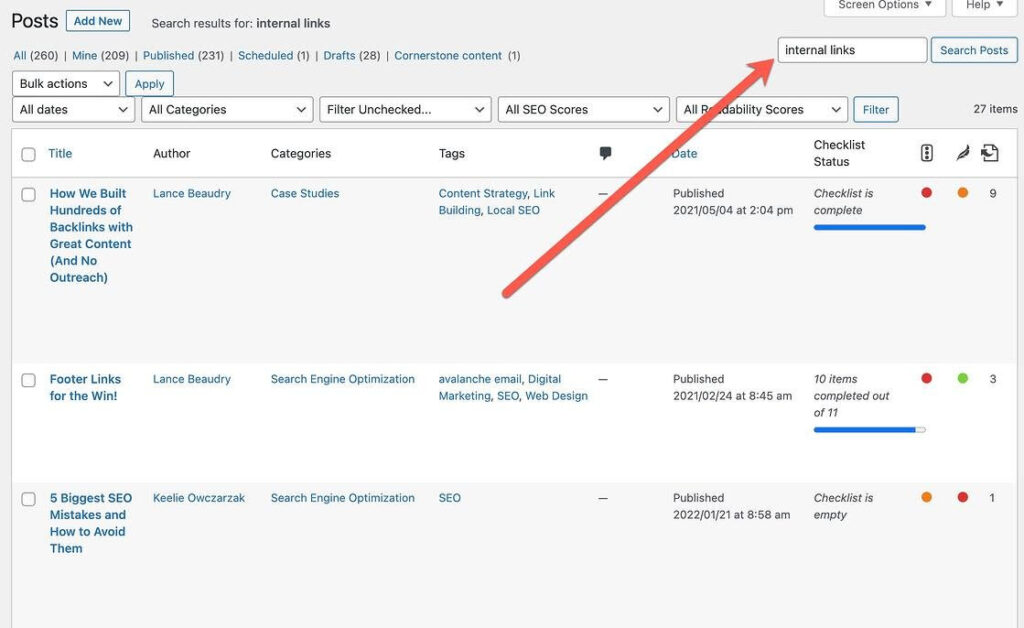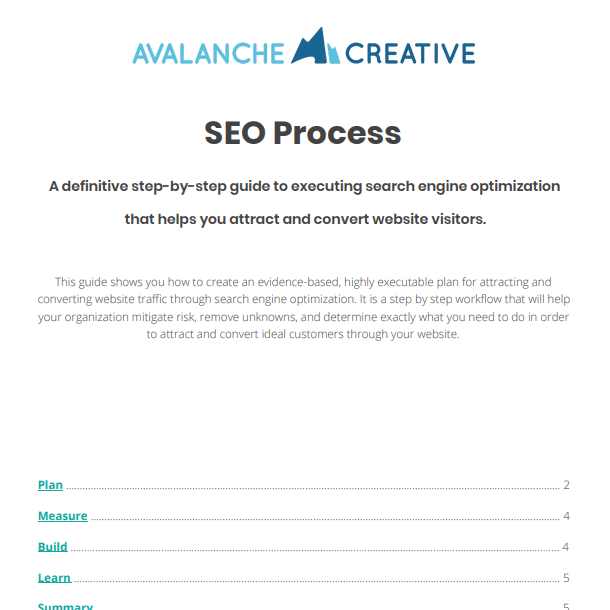Boost Your Search Engine Visibility with This Simple Task
Category: Search Engine Optimization | Tags: SEO, avalanche email, content marketing, wordpress
Learn More and Subscribe to The Avalanche Weekly Email
Today I’m going to show you a 3-minute task you can regularly do to boost your search engine visibility.
First, let’s talk about something important.
When it comes to SEO, the game is never over. You always need to add and optimize content on your site.
But it can be hard to determine when you should update existing content (not to mention when you should get rid of content altogether).
Here’s a quick guide for making the best decision:
- Check your page’s rank for your target keyword.
- Audit the search engine results page in Google to see what the results look like.
- Does your page content fit into the mix of what’s available on Google, or is it a bit off? If it seems to fit in, you likely need to update that page. If it doesn’t, you may need a new page.
Boost Visibility with Internal Linking
If you are creating new content or optimizing existing content, one of the best SEO tasks you can perform is internal linking (adding links from one page of your site to another).
Here’s how you can find the best places on your existing website to add internal links with a content management system like WordPress:

- Search for your target keyword in your posts or pages (screenshot above).
- Open the posts/pages that appear in your results.
- Select Control + F to search for the keyword in your existing content.
- See if you can find a good, logical place to link to your new or existing content that might benefit the reader.
That’s it. You’re done. You’ve done a simple SEO task that can really go a long way in boosting your visibility.
Why Are Internal Links So Important?
- They provide more context to the search engine and the human that is browsing the web.
- They help your website visitors find what it is they care about if they can’t find it on the page they are currently on.
- Google looks at ambiguous keywords in the context of how big a topic is. When they find URLs with lots of well-organized internal links related to a topic, they have more confidence the searcher will eventually find what they need on that page.
Share this article:
The Avalanche Email: Fun. Simple. Educational. No Selling.
Learn Result-focused SEO & Content
Join over 2,272+ others who get one email every Wednesday with simple instructions on how to get more website traffic and leads through SEO and content marketing. (Learn more about the email)
Keep Learning
How To Show Up in Gemini (And Win More Local Jobs)
Show up in Gemini when homeowners search for landscaping services. Build the right signals on Google and your website to win more qualified local jobs.
How to Run Google Ads for Landscapers: A Complete Guide
Learn how to set up Google Ads for landscapers, attract qualified leads, and win more local jobs with this step-by-step guide.
🏔️ Watering > Planting New Seeds
Your next marketing win may already be on your site. Learn how to optimize existing pages for better rankings, traffic, and results.
The Recipe vs. The Meal
Your customers buy the experience, not the product. Discover a simple way to shift your message from ingredients to the full meal.
🏔️ Hook, Line, and Sinker 🎣
Use this fishing framework to turn your posts into stories that capture attention, create tension, and inspire action from your audience.
🏔️ Avoid Everything That Doesn’t Move You Forward
Stop chasing shiny tools and refocus on what moves your marketing toward the end zone. Simple steps to cut noise and make steady progress.




